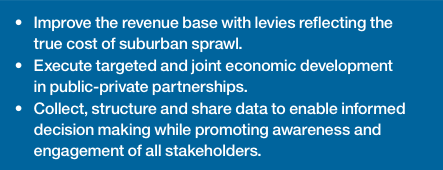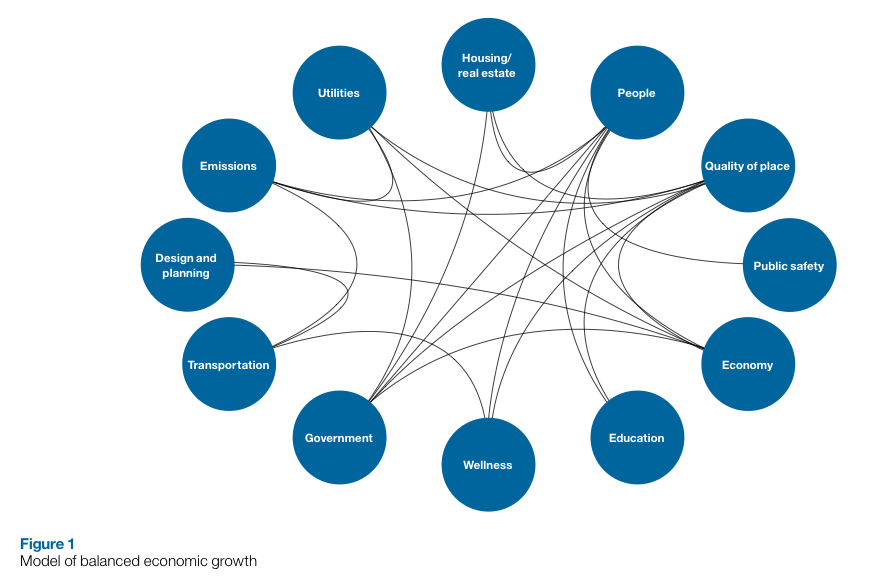IBM SMARTER CITIES
Executive Summary
Omaha, Nebraska, was one of the 33 cities selected to receive a Smarter Cities Challenge® grant from IBM in 2012 as part of IBM’s citizenship efforts to build a Smarter Planet®. Since the program’s inception in 2010, 64 cities have received Smarter Cities Challenge grants, and many of these have already made great progress on the road to becoming more instrumented, interconnected and intelligent (additional information is available at www.smartercitieschallenge.org).
During three weeks in October 2012, a team of five IBM experts worked to deliver recommendations on a key challenge identified by Mayor Jim Suttle and his senior leadership team: Attain sustainable and balanced growth of Omaha.
Omaha has a history of successful public-private partnerships and committed philanthropic organizations. The city’s economy has been healthy, partially due to these fundamentals. Growth and economic development in Omaha has been impressive when compared to national and international development. Home to five Fortune 500 companies and other major businesses, the city’s economy includes well-established non-profit organizations, a strong medical community and sustained job creation.
This prosperous development, however, has not been evenly distributed. It has led to a stretched city with substantial fiscal, economic and social sustainability issues. Some areas of the city are unable to participate equally in its successes. They are faced with issues such as high unemployment, poverty and inadequate labor skills, which impacts the city as a whole.
Citizens have a choice between urban and suburban living, but Omaha’s primary growth has been in the western suburbs with low-density populations. This trend of suburban sprawl is more pronounced than in most other US cities and can, in part, be attributed to the fact that Omaha is in a unique position of having planning and annexation authority three miles outside of its incorporated boundary. As a result, the overall population density per square mile shrank from 6,172 in 1950 to 3,162 in 2012. This reduced density affected the city’s financial stability, the sustainability of service levels and the potential for long-term economic growth. To rebalance growth, it will be necessary to make the “cost of choice” transparent to citizens.
Findings
The IBM team identified four root causes:
Greenfield versus infield development
In past decades, thanks to relatively low land prices and attractive off-balance financing arrangements, greenfield development has offered major financial advantages over redeveloping in Omaha’s inner core. Combined with a predominant preference of citizens to live in spacious suburban areas, this has led to an enormous western expansion of the city. The relative disadvantage of business and real estate development in older parts of town has led to more sections of the inner city being vacated.
From a government perspective, this means that a disproportionate, wider area must be serviced : a low-density area of greenfield developments in addition to the existing older parts of the city with less economic activity and fewer inhabitants than before.
Planning
Over the years, the City has developed numerous plans that would have benefited from collaborative planning with a holistic view of development. This system of planning would make possible the development of neighborhoods as a concerted effort to prevent suboptimal outcomes. To cater to the societal challenges in parts of the city, real estate development and the provision of housing, education, health care and other services should go hand in hand, jointly focused on the optimal outcome for a particular neighborhood.
Sharing information
Due to siloed plan execution, data is not easily accessible between departments and institutions. The lack of a central data repository prevents the City from making informed decisions accounting for interdependencies between different focus areas such as education, health care and public transport.
Communication and awareness
Citizens are generally unaware of the broader strategy envisioned for their city, and lack knowledge about the services it provides and their associated cost. If information is not easily accessible to both businesses and citizens, it results in a barrier to economic growth and inhibits the support and engagement of citizens and other stakeholders.
Read full report (PDF) here: IBM’s Smarter Cities Challenge: Omaha
About IBM Smarter Cities
www.ibm.com/smarterplanet
“Infrastructure. Operations. People. What makes a city? The answer, of course, is all three. A city is an interconnected system of systems. A dynamic work in progress, with progress as its watchword. A tripod that relies on strong support for and among each of its pillars, to become a smarter city for all.”
Tags: Greenfield versus infield development, IBM Smarter Cities, Nebraska, Omaha, planning








 RSS Feed
RSS Feed